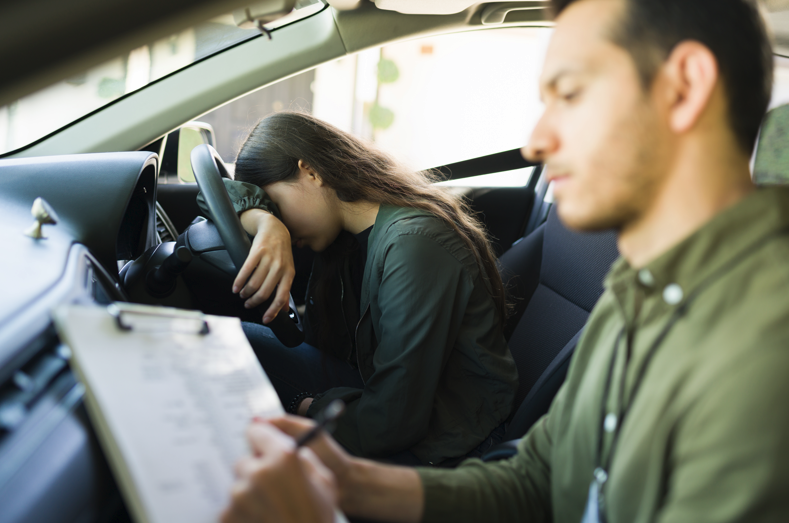Online car sales platform cinch reveals the driving blunders most likely to delay your L-plate removal, giving useful tips on ensuring you have the best chance of passing
52% of all UK driving tests result in failure, but there are a wide variety of reasons for these failures. The test can be an intimidating prospect for new drivers, and around one in ten unsuccessful learners say that nerves and stress were the main factor in their downfall. Though with 12% of assessments requiring the physical intervention of the examiner to avert a risky situation, issues of competence certainly play a role too. The online car sales platform cinch has researched the top reasons for failing driving tests, offering expert advice on how to avoid these common errors.
- Not looking properly at junctions
Almost 38% of road collisions across the country occur because drivers fail to look properly.
Remember that examiners closely monitor your attention levels at the wheel. If you’re not alert enough, you won’t receive your licence at the end of the test.
Sam Sheehan, motoring editor at cinch, explained: “Showing a lack of observation on the road is a one-way ticket to a failed driving test.
“Not looking adequately at junctions is one of the most frequent causes of exam failure, as it can put yourself and fellow road users at risk of serious incidents and injuries.
“This might include errors such as entering a roundabout when there’s an approaching vehicle, misjudging the speed of other cars or going straight ahead at a crossroads.
“As you cruise in your used VW or Audi, pay extra attention when reaching a junction. Slow down, look left and right, and move into a new road only when it’s safe. When appropriate, don’t forget to use your indicators, either.”
- Not moving off with care
During the test, the examiner might ask you to stop at the side of the road, on a slope or behind a parked vehicle.
Coming to a should be relatively straightforward, but what tends to get aspiring drivers into trouble is setting off again without checking their surroundings. This type of mistake is marked under the ‘Moving off – Safety’ fault on your final test result, and it happens more frequently than you may think.
When you move off after a brief stop, you must always complete a six-point check, including mirrors and blind spots. It’s also important to indicate and pull out slowly, giving incoming vehicles a heads-up that you’re joining the traffic.
- Not using mirrors correctly
Whether you’re ready to set off or already on the road, using your mirrors is crucial to staying safe.
However, checking mirrors regularly doesn’t always come naturally to learning drivers, meaning it’s one of the most common oversights in driving tests across the UK.
In this situation, practice is key, and mirror-checking will soon become an automatic habit. Sheehan says that you should be especially mindful of the importance of using all your mirrors on the day of the exam.
Check them before you signal, change direction, and increase or decrease your speed. If you’re trying to change lanes on a dual carriageway or roundabout, glance into your mirrors to ensure no vehicles are either approaching or directly beside you.
- Not responding to traffic signs and road markings
Failing to respond correctly to traffic signs and road markings is another popular mistake that can affect the outcome of your driving test.
In fact, 35% of Brits aren’t sure they would be able to pass a driving theory test today due to the introduction of new rules and signs
“When it comes to traffic signs and road markings,” Sheehan commented, “plenty of mishaps count as a fault.
“Common mistakes include ignoring a ‘stop’ or ‘no entry’ sign, entering a bus lane, not adhering to speed limit changes, and crossing double white lines when the closest line to you is solid.
“As always, ensure you’re fully concentrating when in the driving seat, maintain awareness throughout the journey, and follow the instructions given by road signs and markings you encounter.”
- Not respecting traffic lights
Failing to act correctly at a traffic light is another frequent mistake during driving tests. You might have to retake your exam if you proceed through an amber or red light.
Remember that the amber light tells you to stop at the stop line. You’re only allowed to drive on when the amber appears after you’ve crossed the stop line or are too close to it to stop safely.
This is because you might cause an accident if you pull up abruptly.
- Not having a firm grip on the steering wheel
Demonstrating poor steering wheel control is a common fault that can cause you to fail your driving test, too.
As you navigate city roads or motorways, examiners will expect you to handle the car smoothly, steering confidently without the risk of hitting the curb or endangering fellow motorists.
Sheehan said: “One of the best ways to avoid this type of error is to maintain a good hand placement at all times.
“The optimum position to hold the steering wheel is placing your hands at the 2 and 10 o’clock positions. This will give you better control of the vehicle, making manoeuvres smooth and seamless.
“This is also the case when reverse parking. Steering too late, too much or not enough can hinder your chances of parking correctly within a bay or the side of the road, and this is something your examiner will certainly note down.”
- Poor positioning on the road
From driving too close to the kerb to ‘straight-lining’ a roundabout with no consideration for other vehicles, poor positioning on the road is not an unusual error.
To avoid this during your driving test, stay centred in your lane and use visual reference points, such as road markings and the hood of your car.
Also, don’t forget to check your mirrors and blind spots, as these will help you monitor your positioning and distance from other vehicles.
From poor observation at junctions to neglecting road signs and not checking mirrors properly, many factors can make or break your driving test.
Having a vigilant passenger by your side might make you nervous, but with a few tricks up your sleeve, you can cruise your way to a well-deserved driving licence.








